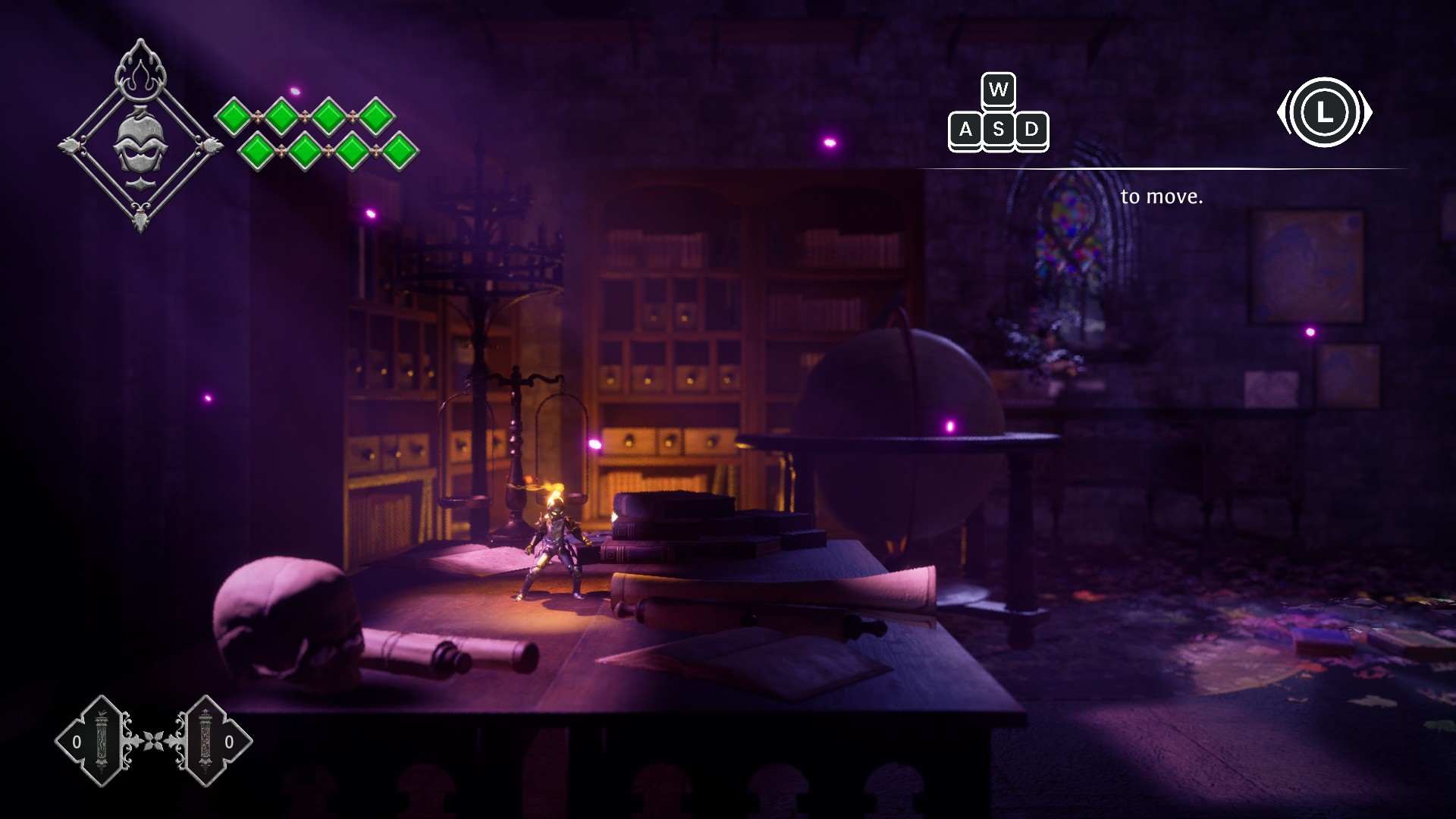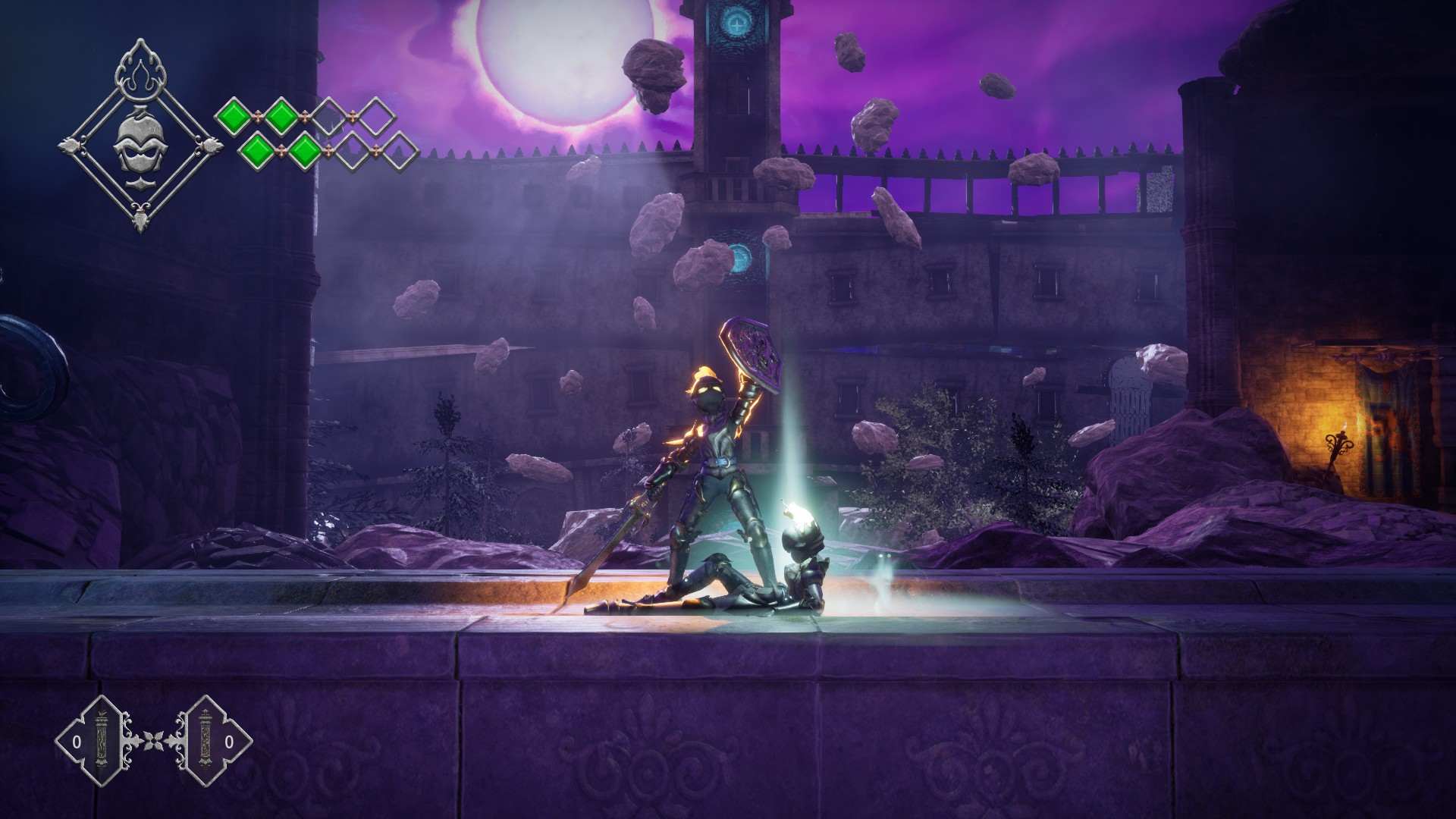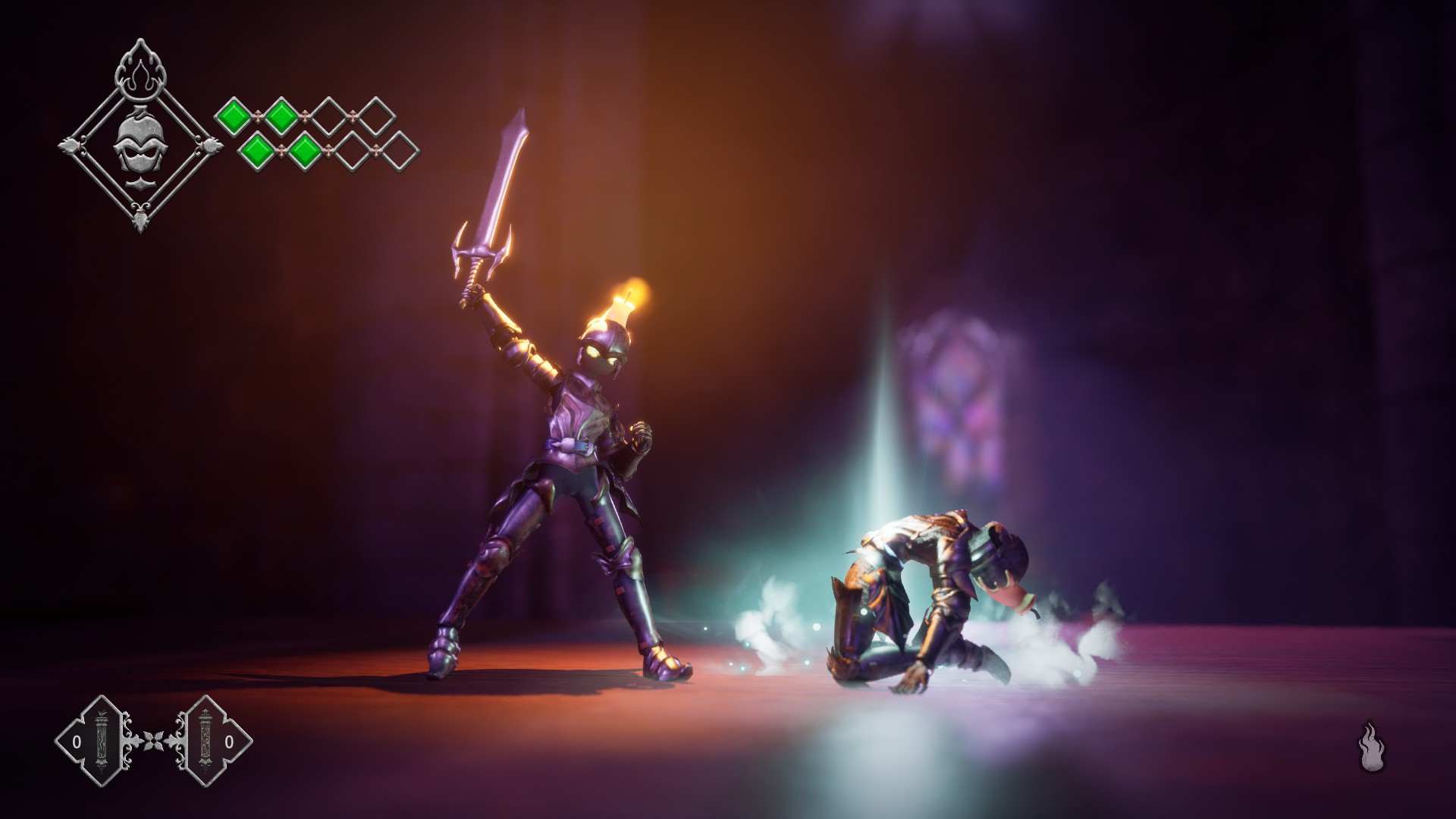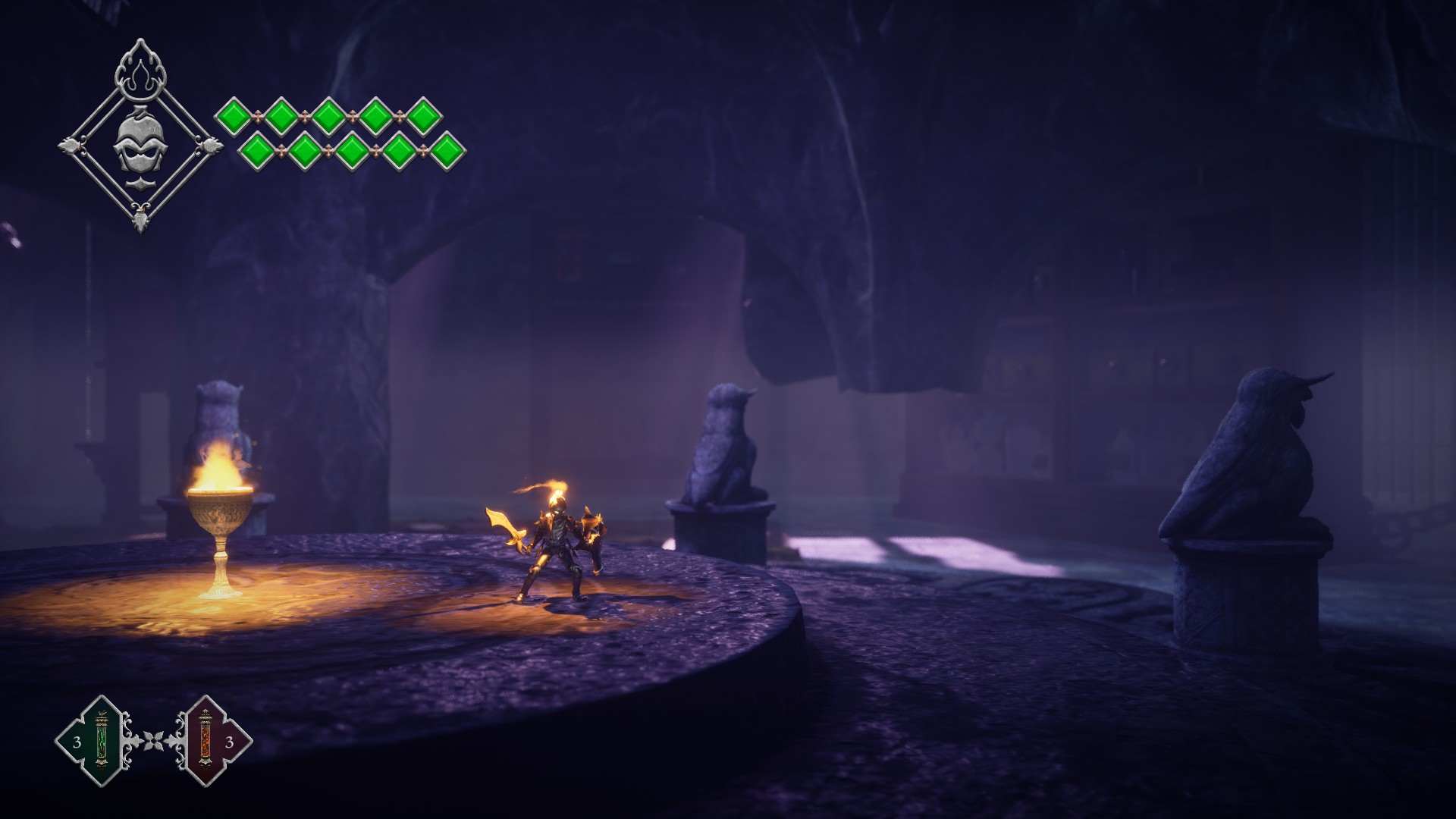
In this review of the 2.5D indie platformer Candle Knight, we’ll analyze the many appealing factors of the game and its issues and decide if it’s worth playing. The Mexican indie developer Dracma Studios describes the game as a 2.5D action-adventure platformer that features a unique dynamic difficulty system. Candle Knight appears to be inspired by the Souls games and Hollow Knight.
This review will be separated into a few categories for the reader’s convenience. We will discuss the game’s visuals, audio, gameplay and combat, narrative, and performance, as well as bugs and other issues. After evaluating the many aspects and features of Candle Knight, we will decide if it’s worth playing or not.
This review does not contain spoilers for the game’s story and narrative.
Visuals

First of all, let’s discuss the game’s art style. I firmly believe that a good art style that fits a game’s theme is far superior to realism. And in many ways, Candle Knight is just that. The game is set in an atmospheric and cold-looking world, and candles are one of the only sources of light.
The character himself has a helmet with a candle on top, and as he moves around, he illuminates areas. The lighting from the candles in the game world manages to light up only a certain area, keeping the atmospheric and dark feel intact. Almost everywhere you look is shadowy, but it’s not overly dark to completely restrict your view.
With the below screenshots, you can judge the game’s lighting and overall art style, for yourself. I believe that the developer nailed it in the visuals department.

Let’s now talk a little bit about the perspective of the game and the backgrounds. While the game behaves as a platformer, the camera moves around as in a 3D game to give you perspectives that vary from just 2D. This 2.5D perspective is wonderful and the world seems much more three-dimensional (literally and figuratively). And as you traverse this world, you will notice the beautiful backgrounds of the game that never get boring to look at. It can sometimes be a wall with artwork hung or a huge bookcase. Each area features different color palettes and unique backgrounds.
However, I did encounter a few issues with the graphics. For example, there were moments when I noticed missing textures just as I loaded into an area. It took a couple of seconds to load in all the textures. Even after almost all of the textures and meshes were loaded, I noticed how many surfaces remained blurry and muddy, before sharpening. But these are minor issues that aren’t real inconveniences to gameplay.
Audio
While the sound effects themselves can be underwhelming at times, what I did find to be very well done is the music. It combines various instruments to create a soundtrack that adds to the mysteriousness of the world while keeping the player entertained as they explore this odd place.
One of the most beautiful things about the music is how it manages to create an atmosphere that’s somewhat eerie yet strangely welcoming. It’s not very fast-paced (except for some combat sequences) nor is it overly scary. Overall, the soundtrack is very good.
Now, let’s talk about the sound effects. When in combat, your sword slashes and swings to make a decently satisfying sound. When you hit enemies, it makes a crunchy and satisfying sound.
Honestly, the variety of the sounds seems rather low. I found that hitting static objects doesn’t create sound at all, and that’s not very immersive. Lighting candles, jumping, walking and other general actions along with various movements in the game world make sounds, as one would expect. Just don’t expect the sound effects to blow your mind. In general, the atmospheric soundtrack and the half-decent SFX combine to create a compelling atmosphere.
Gameplay and Combat

Let’s first talk about platforming, as it’s one of the most important aspects of the game. We should take the character’s movement and speed into account when speaking about this subject. In another section, I will explain the unique difficulty system that affects your speed for a while.
For now, let me say that the character’s movement is a bit clunky and rugged. Sometimes it feels somewhat unpolished. Candle Knight’s movement is simple. You can jump, run, dash and block, among other minor actions. Running and jumping are what affect the platforming in that regard. Despite feeling clunky, the movement controls are rather responsive and allow for easy management.
There is also an ability to grab onto walls and climb them with ease. Sometimes when you jump toward a wall, you might not grab on as you’d expect. This makes it somewhat frustrating, but that’s not a truly bothersome issue. When we talk about the level design, I’ll explain how many platforming puzzles are set. Overall, the platforming feels good and responsive.
The combat is very simple. You can attack, block, and dash. However, the game is rather slow when it comes to introducing mechanics. For example, almost all melee combat-focused games allow you to dodge enemy attacks from the very start of the game.
Candle Knight, however, introduces the Dashing mechanic much later in the game. So, in the beginning, you only have access to your sword and your shield. A simple combo can be performed with your sword. Your shield can block many enemy attacks, but not very effectively.


A problem I encountered with blocking is the character won’t raise the shield at the split second in which I press the block button. This lack of responsiveness always means that you might get hit despite blocking at the final moment in which the attack lands. Because of this, I found myself preparing to block after finishing a combo, whether the enemy attacked first or not.
Once dodging is introduced, it unfortunately proves to be more resourceful in platforming and exploration rather than in combat. It is somewhat unresponsive, as well. For this reason, I use dashing only to get behind the enemy, and I rely on blocking almost always. Another unconventional method of defense is simply jumping away as a means to dodge the enemy attack. So, overall, the combat needs a lot more polishing. But make no mistake: it’s still quite fun to play.
The Unique Difficulty System
As you attack enemies, the Ignis gauge fills up. There are three levels of Ignis; with each of them, your attack power and speed improve greatly at the cost of defense. At the maximum Ignition level, you move and attack very vigorously but you also need to pay close attention to defense because about two hits would kill you.
I find this system to be very interesting. Because it’s dynamic, you are left to decide which level of Ignition you must maintain to suit your playstyle. I prefer maximum speed and relying on blocking, so I focus on filling the gauge to the fullest. This Ignition system is one of my personal favorite things about the game because it’s original. But that isn’t to say it’s perfect.
Level Design
The world and level design is another aspect of Candle Knight that’s very well executed. You are a tiny being in a huge world; you find yourself to be smaller than even books and other common items. This is a great niche and I truly like it.
With a lot of sections that need to be climbed and jumped on, the platforming levels are decently-made. There are a lot of puzzles throughout the game that are fun to complete. By exploring the world with care, you can obtain many items that are hidden away.
There are “Chalices” in the game that you can light with the candle flame on your character, and they serve as checkpoints. Once you die, you respawn at the last Chalice you activated. This was inspired by the Souls games, but dying doesn’t take away the Gold you have accumulated. So, it’s easier going.
The world is thrilling to explore. It’s quite satisfying to run around in all directions to seek many items and new things. By paying attention to the surroundings, you can create shortcuts that allow you to easily reach locations that were originally difficult to navigate.
So far, I never found any areas that were too frustrating to explore. Sure, there are some flaws with the design, like similar puzzles appearing in many places. But overall, I’m sure many players will find the level design to be great.

Another trope of this game is paintings you can find within the game’s world. By interacting with them, you can enter them and solve a puzzle to enter a new location with new items and enemies to fight. This mechanic makes the game seem and feel a lot bigger, and promotes exploration.
I must mention that these paintings are very beautiful and quite different from the usual game world. They are not very difficult to solve and some of them can be overly simplistic, but I find these unique aspects of this indie game to be very pleasant and interesting.
All of the wonderful features of level design combine to make the world very intriguing to explore. I personally found myself glued to the screen, seeking to find what was next in this beautiful, quaint world.


Conclusion
Overall, Candle Knight by Dracma Studios is a great game that any platformer fan might want to check out. There are some issues with the game, a few bugs here and there, and some performance issues. This game is far from perfect, but the developers have managed to create a great atmosphere and original features.